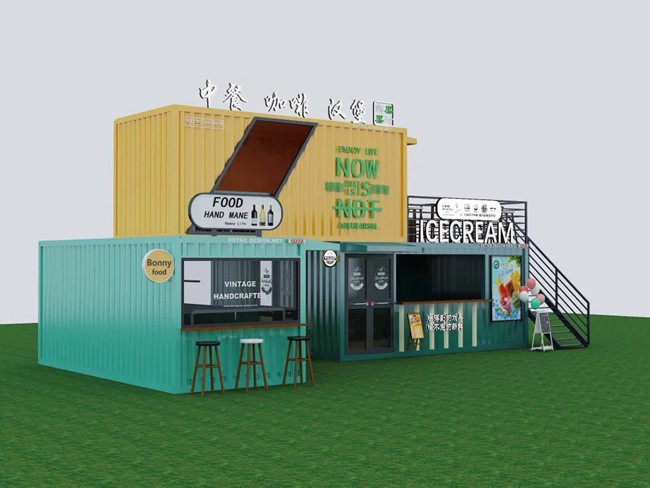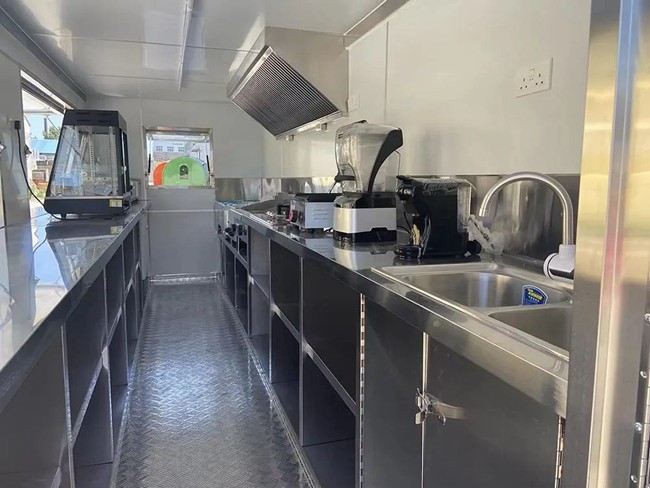Welcome!
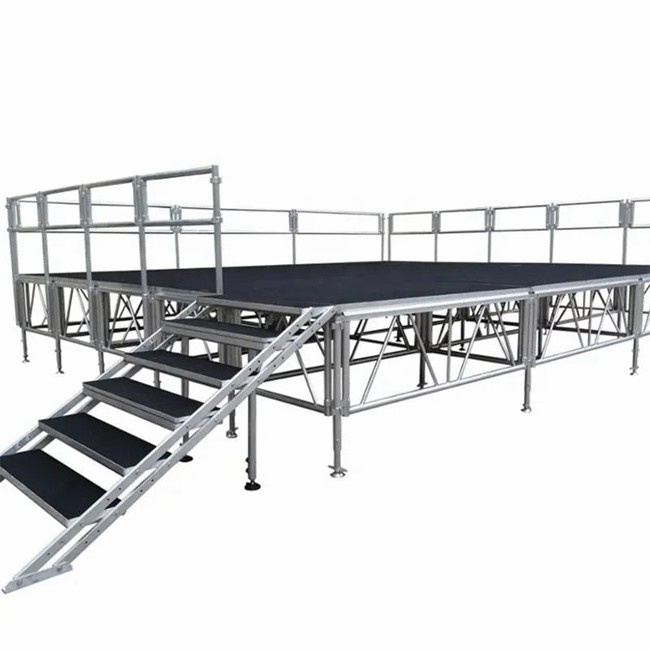



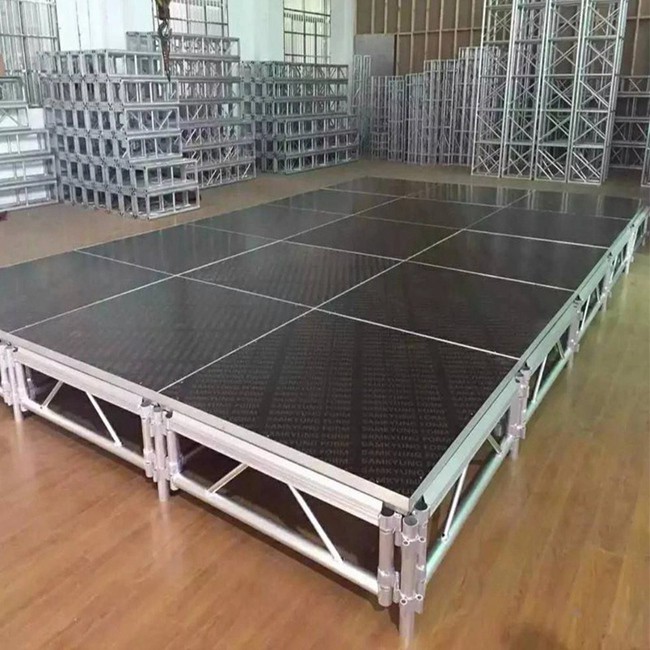

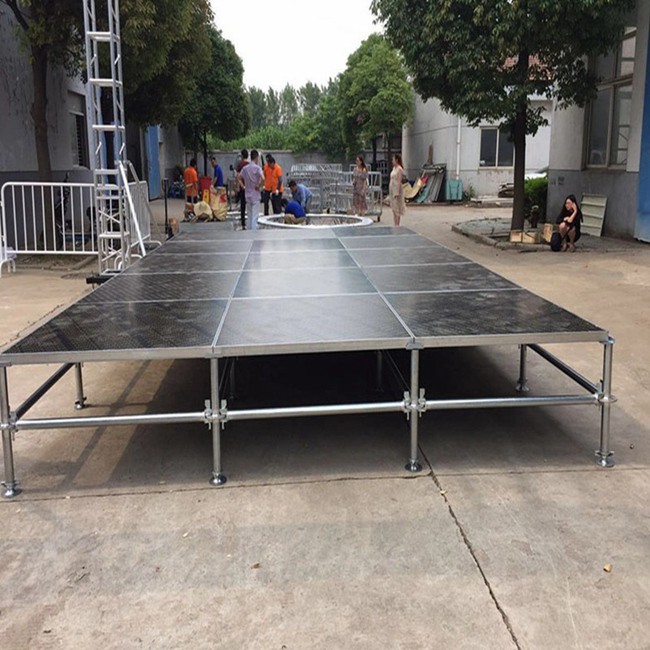
Cheap Portable Concert Stage Equipment Aluminum Stage Mobile Stage
Product Description
Outdoor performances are easily affected by various factors such as weather, lighting, temperature, terrain, and water and electricity facilities, which need to be fully considered in the design and construction process. The construction and dismantling of outdoor stages require attention to safety to avoid accidents such as stage collapse and electrical leakage. During the construction process, attention should be paid to detail handling. The protection of the stage edge, the concealment of lighting and sound equipment, and the design of the stage background all need to be carefully considered and arranged to ensure the overall beauty and coordination of the effect.
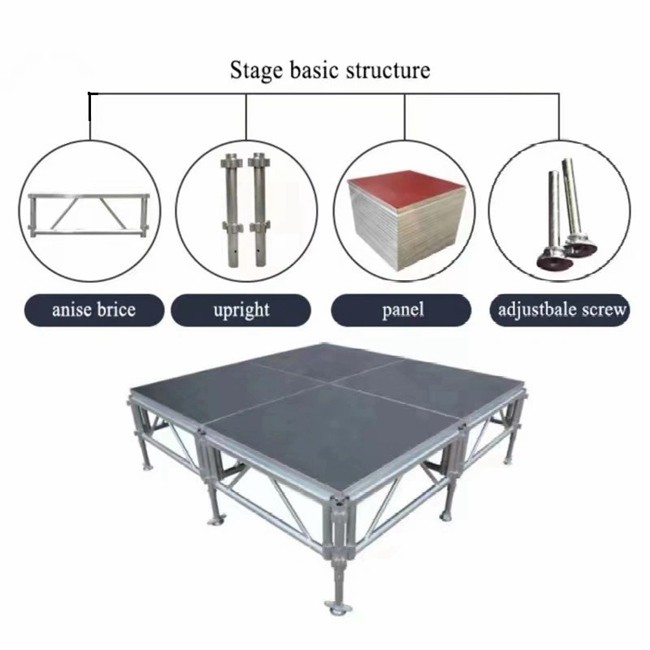
The construction and use of outdoor stages should fully consider weather factors. In adverse weather conditions such as wind, rain, and high temperatures, timely protective measures should be taken to ensure the stability of the stage and the safety of performers. When building a stage, it is important to plan the space reasonably. We need to ensure that the performers have sufficient space for their activities, while also considering the audience's needs for passage and viewing. At the same time, attention should be paid to the coordination and aesthetics with the surrounding environment.

The stage built in outdoor environments for performances, activities, or exhibitions has a wider space and a more natural background compared to indoor stages, but also faces more challenges and limitations. The most prominent feature of outdoor stages is their vast space, which provides great development space for stage set design, but also brings challenges such as how to effectively utilize space and how to coordinate with the surrounding environment.

Aluminum stages have been widely used in modern stage construction due to their high strength, lightweight, elegant appearance, easy maintenance, and strong flexibility. When choosing an aluminum stage, it is important to pay attention to selecting a reputable manufacturer, understanding product specifications, checking product quality, and considering factors such as transportation and installation. The construction and use of outdoor stages require comprehensive consideration of multiple factors and challenges. Through reasonable planning and careful construction, a beautiful and practical stage can be built to add color to outdoor activities.

Post inspection and maintenance
Comprehensive inspection: After the stage construction is completed, a comprehensive inspection and testing should be conducted, including the stability, safety, lighting, and sound equipment operation status of the stage.
Regular maintenance: During the use of the stage, regular maintenance and upkeep should be carried out, including checking the structure and equipment of the stage for completeness, repairing or replacing damaged components, etc.
Safety training: Provide safety training to staff to ensure they understand the safety operating procedures and emergency response measures for the stage.

Recommended Products
Recently Viewed
 Prefab Luxury Mobile Folding House Prefabricated Home Storage Kiosk Booths
Prefab Luxury Mobile Folding House Prefabricated Home Storage Kiosk Booths Factory Price Mobile Prefab Sentry Box/Shop/Kiosk/Ticket Booth
Factory Price Mobile Prefab Sentry Box/Shop/Kiosk/Ticket Booth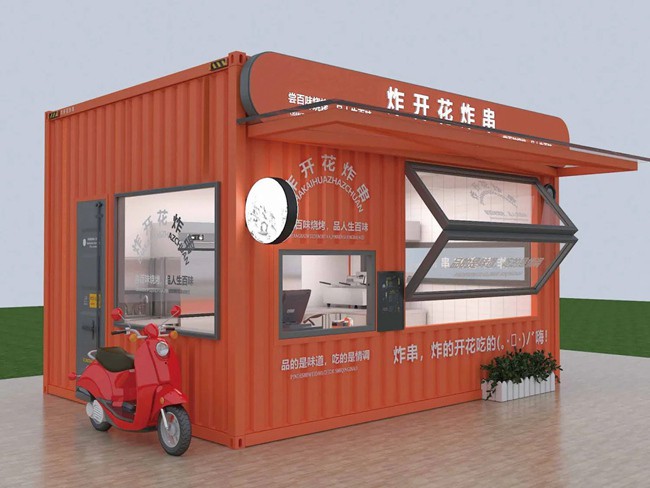 Factory Price Container House Fast Food Kiosk Container Booth and Shop
Factory Price Container House Fast Food Kiosk Container Booth and Shop High Quality Mobile Prefab Sentry Box/Shop/Kiosk/Ticket Booth
High Quality Mobile Prefab Sentry Box/Shop/Kiosk/Ticket Booth Factory Price Easy Assembly Sandwich Panel Portable Security Booth
Factory Price Easy Assembly Sandwich Panel Portable Security Booth
Contact Us
Suzhou Liansheng Aluminum Industry Co., Ltd.

